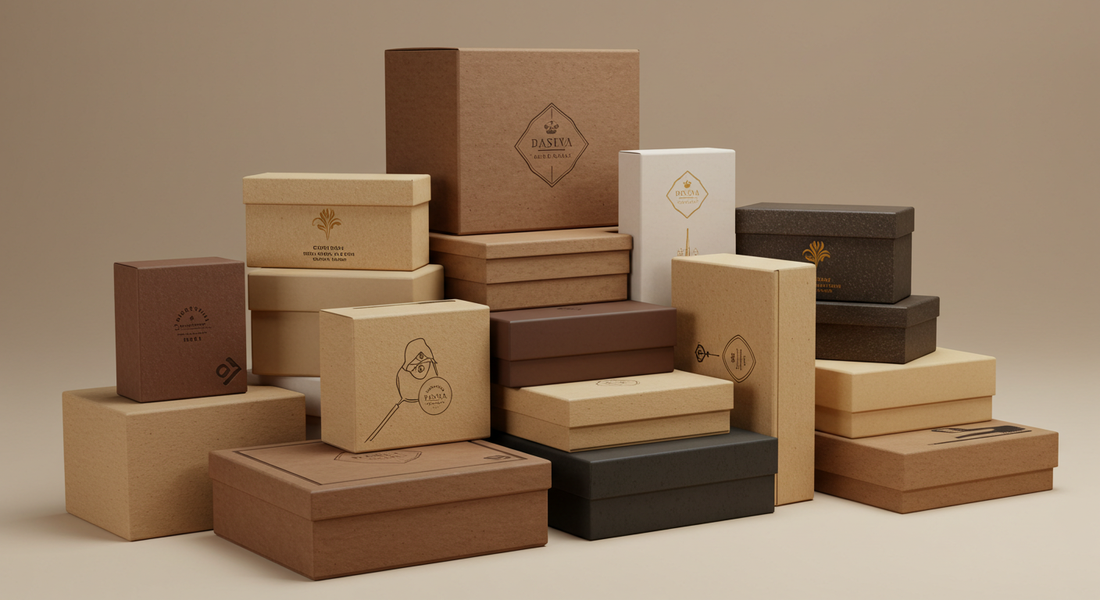
Custom or Cost-Effective? Finding the Right Box for Every Product Type
One of the major questions any brand faces in terms of packaging is whether to spend extra on high-quality custom boxes or base their packaging decisions on cost-effective options. It all depends on your product, your brand, and what your customers expect from you. What works for one may not work for another
Packaging is the very first thing that your customer comes into contact with, from luxury skincare to handmade candles, the right checkbox could mean the difference between a product that stands out and one that goes unnoticed.
Now, let us talk about when you should go custom and when a simple, inexpensive die-cut box is all you need.

The Real Job of Packaging
Packaging is not just about looking nice. One day, you will need to protect your product during shipping. Next, it needs to show off your brand. Most of the time, it has to do both at once. So, ask yourself: Is the box strong enough for shipping? Is it easy to open or create an impression?
So, When Should You Use Custom Rigid Boxes?
There are custom rigid boxes, and they are second to none as far as packaging goes, especially for premium, delicate, or giftable products. These boxes are durable, classy, and extremely versatile. Feel free to request logos, inserts, magnetic closures, or textured finishes. Not merely a box, but rather a moment for the brand.
Think of products like
- Luxury cosmetics or perfumes
- Electronics and gadgets
- Jewelry and watches
- Subscription or gift boxes
Shoppers purchasing these items expect quality in the entire experience. That’s where rigid boxes shine.
Even rigid boxes can be customize rigid boxes with logos and inserts to lead the unboxing experience. These inserts hold each particular piece in place. Logos reinforce your identity. And that attention to detail that a careful design conveys makes the customer feel, “this brand cares.”
A rigid box is more expensive compared to a single that will can be flat, although the return to the manufacturer extends far over in case associated with the tangible price of the box. Many customers are happy to pay extra for packaging dazzles which can emphasize repurchases.
When to Use Die Cut Boxes?
Not every product deserves a nice box. Often, the best thing you can do is keep it simple and cheap, if you are moving stuff in bulk or on a tight margin.
Light in weight, convenient storage and fast production ease the work process by making die-cut boxes. They are constructed from flat sheets which are cut to shape and generally folded without adhesive. This is what makes it efficient and free of cost.
They are perfect for:
- Apparel and accessories
- Food items
- Lightweight retail products
- Bulk shipping
For e-commerce stores or any brands with space and budget constraints, affordable die-cut box solutions can be time and cost-efficient without compromising on functionality.
Branding can still be done, stickers, printed tape, or even a plain single-color logo. That may not provide the same luxurious, rigid experience, but that is not the point for most businesses. The idea is to simply land the product there safely, in a clear and cheap manner.
The Cost Factor
If you choose custom rigid boxes based on size, design, and material, it may cost $1 to $5 per unit. The cost to produce a die-cut box can start as low as 25 to 50 cents, especially at volume.
That difference can also add up rapidly, especially if you are selling 1,000 units/month.
The secret is to align the packaging with produt and customer's expectations. Not everything has to come in a velvet-lined magnetic box. Not every box should also just be brown kraft paper.
Match the Box to the Mission
Every box tells a story, whether a rigid option or die cut needs to match your product, your audience, and your business objectives.
There is no need for further worrying. You only have to ask the correct things:
- What does your customer expect?
- Is the product breakable or worth something?
- What’s your budget per unit?
- Will you be needing inserts, logos, or other secondary processes?
Answer those, and your packaging choice is much easier.
Ready to Make the Right Move?
Now is the time to get tactical, whether it is with a new product or trying to gain a new perspective on existing packaging. Evaluate your product offerings, see what matters most to your consumers, and select packaging that aligns with and not works against your business objectives.
Your box should pull as much weight as your product. Make sure it’s the right one.
